|
88. Arethusana arethusa (Denis & Schiffermüller, 1775) / False grayling / Nymphalidae – Satyrinae
NL: (oranje) steppevlinder / D: Rotbindiger Samtfalter / F: mercure, petit agreste
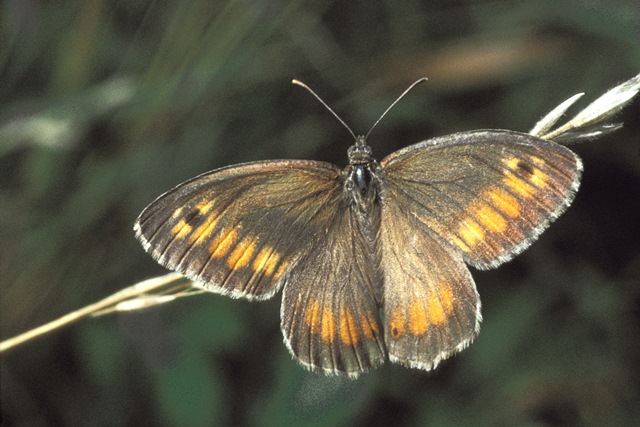 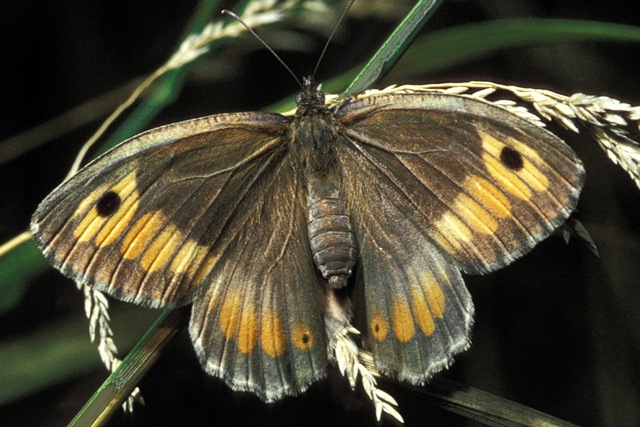 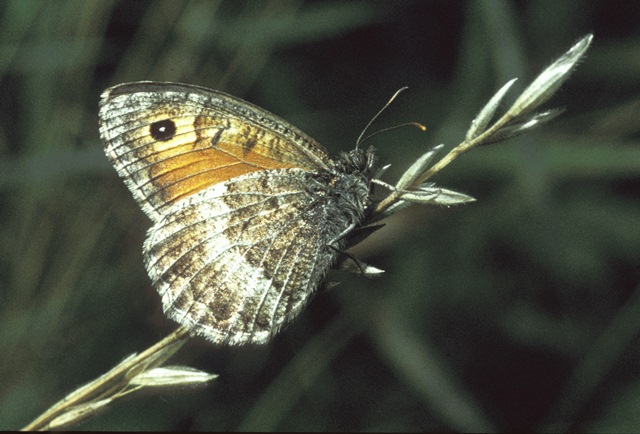
Photographs: Frits Bink ©.
Medium-sized butterfly, wing length 23 (21-25) mm. The species occurs in the Benelux only as a vagrant in Wallonia. It is an inhabitant of sparse grass vegetation on warm sites as in the valley of the Viroin, where in 1992 two butterflies were observed.
Butterfly is on the wing from early-August until early-September, it peaks mid-August. It is known from sub-continental and mild continental climates, amplitude 8 to 16. Required heat sum is 900°d and maximum tolerated 3000°d, corresponding climate windows 25 weeks and full year open.
In France the species occurs at a distance of less than 60 km from the Belgian border in the valley of the Meuse on warm and dry slopes with Xerobromion vegetation. The life cycle of the false grayling resembles that of the tree grayling (Hipparchia statilinus) and in southern Europe both species often occur together.
Ecological characteristics
Behaviour over time
Overwintering: very small larva, often newly hatched, in a tussock of a short grass.
Reproduction: oviposition starts after 3-4 days when the body contains 108 (86-123) eggs, estimated production 1.8 times as much.
Larval feeding periods: sometimes a little in late autumn, in next spring and summer 122 (115-128) days from end-March until early-July.
Generations: one.
Spreading of risk: variability in length of diapause of newly hatched larvae, up to 6 weeks.
Life cycle: egg about 14 days; larva 41-46 weeks; pupa 27 (24-35) days. Pupation in moss layer.
Life span of adult: rather long, 3 weeks.
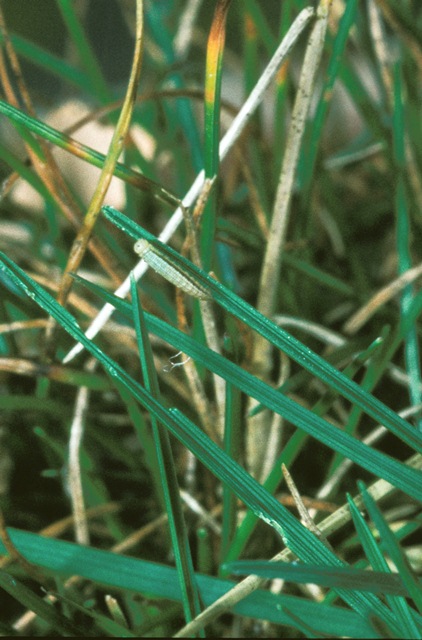 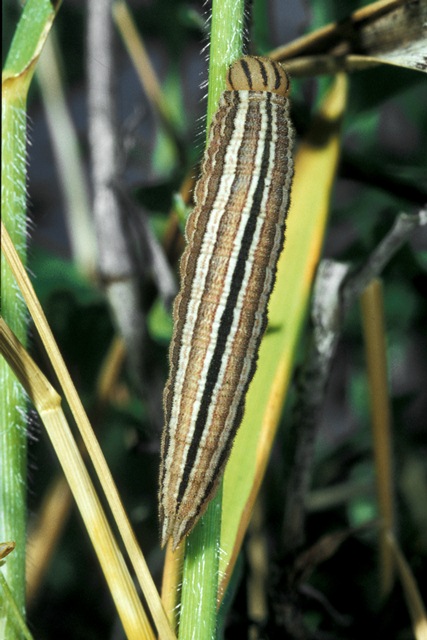
Photographs: Frits Bink ©.
Behaviour in space
From stay-at-home to migrant: stay-at-home, spatial requirement modest.
Finding a mate: male patrols and perches sometimes.
Orientation in the landscape: open field with mixture of short and tall grass.
Oviposition: eggs are dropped from resting position.
Defence
Threats from other organisms: avoidance by cryptic colouration and behaviour.
Threats from the environment: endure heat and draught quite well.
Feeding habits
Adult: nectar of all kinds of flowers.
Larva: in summer nocturnal.
Larval foodplants
Plant species: Poaceae, e.g. Brachypodium pinnatum, Bromopsis erecta, Festuca ovina, F. rubra.
Journal
Rearing experiment based on specimens from Dieue-sur-Meuse, Lorraine, France.
19 August 1984: fresh females captured at an old, unmanaged chalk grassland.
22 August: eggs laid.
5 September: first larva appeared, ate the eggshell.
18 September: larvae had not eaten.
6 October: one larva observed to have eaten some food.
1 November: most larvae appeared to have eaten something.
Overwintered outdoors.
7 March 1985: pot with tussock taken indoors, larvae first instar.
23 March: all larvae end first instar.
20 April: larvae third instar.
14 May: larvae of equal size, third instar, 11 mm in length.
29 May: three larvae fifth instar, the others in fourth.
6 June: biggest larva nearly full grown.
30 June: four prepupae, shallow in the soil.
31 June: first pupa.
3 July: three pupa, one larva active.
11 July: last larva pupated.
26 July: first adult butterfly appeared, female.
27 July: second one, male.
28 July: third one, female.
Table 88-1. Results of dissections

Table 88-2. Collection and observation localities
F, Aurel, 400 m, 44° 43’N – 5° 16’E; 29 August 1984, 2 September 1984.
F, Averdon 47° 39’ 38”N – 1° 17’ 23”E; 30 August 1982, 3 September 1982.
F, Lorraine, Dieue-sur-Meuse 49° 05’ 11”N – 5° 27’ 25”E; 19 August 1984.
Fig. 88-1. Arethusana arethusa, designed phenogram.
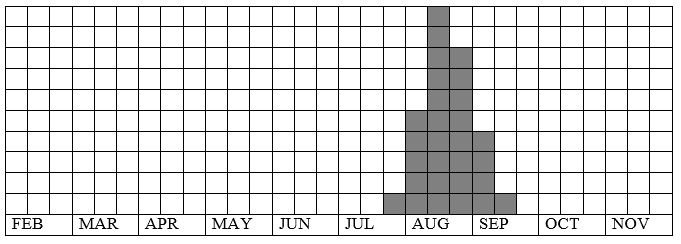
Fig. 88-2. Arethusana arethusa, habitat characteristics.
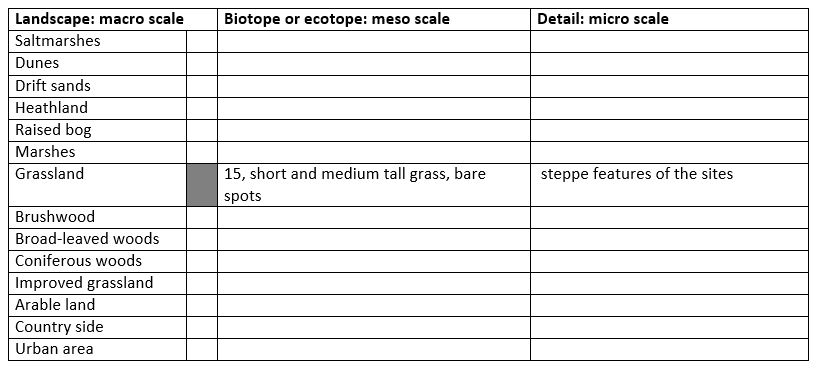
Fig. 88-3. Arethusana arethusa, climate matrix, heat-sums 900 - 3000°d.
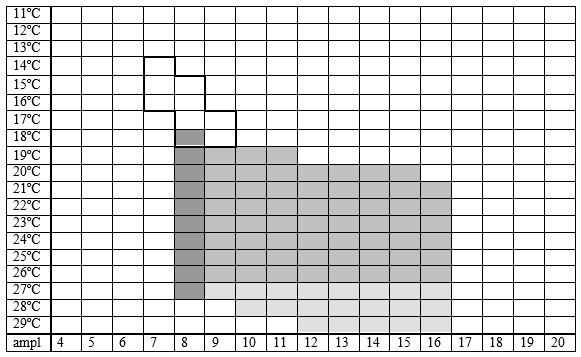
|










